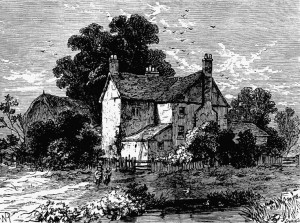The 18th century Notting Hill in Bygone Days by Florence Gladstone Peaceful hamlet The first encroachment on the rural character of Notting Hill was the cutting of the Paddington Branch of the Grand Junction Canal. Several artificial waterways had already been constructed among the manufacturing towns in the north of England, and the canal system …
Category: Notting Hill
Notting Hill in Bygone Days: In the Eighteenth Century
Gravel Pits Notting Hill in Bygone Days by Florence Gladstone The 1830s The commencement of the village of Kensington Gravel Pits has already been described. Under present conditions it is difficult to realize how countrified the place remained during the whole of the eighteenth century. In Kip’s Britannia Illustrata, published in 1714, there is a …
Notting Hill in Bygone Days: Kensington Gravel Pits and Northlands
Chenesitun Notting Hill in Bygone Days by Florence Gladstone The 18th century During the period of disorder which followed the Roman occupation of Britain, the forests were allowed to encroach, and in many places stretches of road became decayed and were ultimately overgrown by trees. This evidently happened between Brentford and Shepherd’s Bush. As the …
Notting Hill in Bygone Days: Chenesitun and Knotting Barns
Table of contents Notting Hill in Bygone Days by Florence Gladstone Gravel Pits On the north side of the Thames as it crosses London there is a range of low hills. Beginning with Tower Hill close to the river, the range ends with Campden Hill, three-quarters of a mile from its bank. Each hill is …
Notting Hill in Bygone Days
Here’s a scan of the the seminal 1920s book about W10 and W11 history (now out of print): Florence Gladstone’s “Notting Hill in Bygone Days”. Each chapter is available here by following the links. P.S. Passing thanks to the big scanner at the Kensington main library which Dave Walker who does The Library Time Machine …
All Saints Road, W11
Local and social historian Tom Vague writes about All Saints Road in Notting Hill. The Wise brothers described All Saints Road at the height of its Frontline notoriety, when the street never closed without police assistance, as ‘a north London casbah’ featuring late night Rasta football games and street fights. In an All Saints joke of …
The Apollo
Local and social historian Tom Vague writes about the Apollo in All Saints Road. In ‘Once Upon a Time there was a Place called Notting Hill Gate’, the normally hypercritical Wise brothers get quite sentimental about the old Apollo pub: “It had been an okay dive, despite the many nights of depression, all 57 varieties of …
The Mangrove
Local and social historian Tom Vague writes about the Mangrove restaurant which stood on the corner of All Saints Road and Westbourne Park Road between 1968 and 1991. “Mangrove, smell of hashish, swirling clouds of ashen smoke, weave in, around, away, palms like giant fingers, sounds of laughing, belly deep and penetrating, wise words and indiscretions, …
Notting Hill and Bayswater
Extract below originally appeared in pages 177-188 of Edward Walford, ‘Notting Hill and Bayswater’, in Old and New London: Volume 5 (London, 1878). British History Online. As soon as ever we quit the precincts of Kensington proper, and cross the Uxbridge Road, we become painfully conscious of a change. We have left the “Old …










